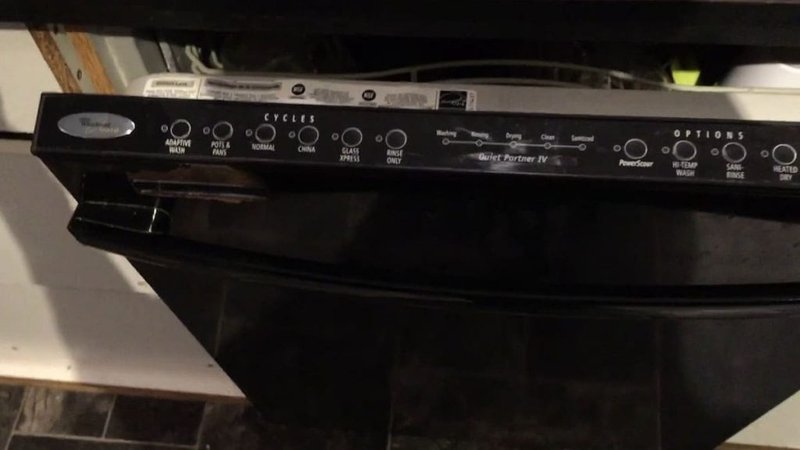
Now, you might be asking, “How do I fix this?” Resetting your Kitchenaid dishwasher might sound like an intimidating task, especially if you’re not a tech whiz. But resetting could be the simple solution to getting your trusty machine back on track. In this guide, I’ll walk you through the step-by-step process of resetting your dishwasher after encountering the HE error code. By the end of this article, you’ll feel confident and ready to tackle the issue like a pro, ensuring your dishwasher runs smoothly and efficiently again.
Understanding the HE Error Code
First things first, what exactly is this HE error code, and why does it show up? The “HE” stands for “Heating Error,” which means your dishwasher’s internal heater isn’t working as it should. The heating element is vital for ensuring your dishes are washed at the right temperature. It’s like trying to wash your clothes in cold water when the fabric really needs hot water to get that tough stain out. Without the correct temperature, your dishwasher can’t effectively clean and sanitize your dishes.
Several underlying issues could trigger this code. It could be a malfunctioning heating element, a problem with the thermostat, or even an issue with the wiring or control board. Imagine trying to figure out why your light bulb isn’t working – is the bulb blown, is the switch faulty, or has a circuit breaker tripped? Much like a detective, you’ll need to pinpoint the culprit behind the HE code, which could be a bit tricky without some guidance.
Luckily, resetting the dishwasher is a good first step. It helps to rule out temporary glitches that can sometimes cause the code to appear. Think of it like rebooting your computer when it starts acting up. Sometimes, all it needs is a fresh start to get back to normal. Before diving into more complex solutions, a reset will often get your dishwasher back to proper working order, saving you time and stress.
Steps to Reset Your Kitchenaid Dishwasher
Resetting your Kitchenaid dishwasher is like giving it a fresh start. It might seem daunting at first, but it’s actually a straightforward process. Let’s walk through it together, step by step. First, ensure your dishwasher is completely switched off. This means cutting the power at the source. You could unplug it from the outlet or, if that seems tricky, switch off the circuit breaker that supplies power to your dishwasher. This ensures safety and resets any electrical components.
After disconnecting the power, wait about 1-2 minutes. This downtime is crucial as it allows the system to fully discharge and reset. It’s similar to how you might let your phone power down completely before restarting it to clear out any minor glitches. During this time, you can take the opportunity to check that nothing is blocking the spray arms or filters and that everything inside is in order.
Once you’ve waited, reconnect the power by plugging the dishwasher back in or turning the circuit breaker back on. Now, choose a simple cycle and see if the error persists. If the error code has vanished, congrats! You’ve successfully reset your dishwasher. If not, don’t fret. Sometimes, the problem might require a bit more troubleshooting, which we’ll explore next.
Troubleshooting Persistent Issues
So you’ve tried the reset, and the HE error code stubbornly remains. What’s next? This is where we delve a little deeper. If resetting didn’t do the trick, it might be time to check the heating element itself. This component is like the heart of the dishwasher’s hot water cycle, and if it’s not working, neither will your heating cycle. If you’re comfortable with some DIY, you can inspect the heating element for visible signs of damage, such as cracks or breaks.
If the heating element appears intact, the problem might lie with the thermostat or the wiring. The thermostat controls the temperature regulation – like a conductor directing an orchestra – and any fault here can lead to improper heating. On the other hand, faulty wiring can disrupt the electricity flow, much like a kink in a garden hose affects water flow.
If these checks feel too technical, it’s perfectly okay to call in a professional. Some issues might require the expertise of a technician, especially if it’s something more complex like a control board malfunction. In the meantime, consider using alternative methods, like rinsing dishes before loading or using shorter cycles, to minimize any inconvenience.
Preventative Measures for Future Errors
To keep your Kitchenaid dishwasher running smoothly and prevent future HE error codes, regular maintenance is key. Think of it like keeping a car in top condition – regular oil changes and check-ups go a long way. Make it a habit to clean the filters and spray arms to prevent any blockages that could affect the heating process.
Additionally, be mindful of the types of loads you’re inserting. Overloading can sometimes lead to ineffective cleaning and unnecessary strain on components like the heating element. Like trying to stuff too many clothes in the washer, an overloaded dishwasher can’t perform optimally.
Running a monthly cleaning cycle using vinegar or a specialized dishwasher cleaner can help keep internal components free from buildup. This simple step acts like a detox, removing any mineral deposits or grime that might affect performance. Finally, always check for software updates. Manufacturers occasionally release updates to fix bugs or improve performance, much like app updates on your phone. Keeping your appliance up to date ensures it runs at its best and can prevent issues like the HE error from reoccurring.
By following these steps and tips, you’ll maintain your Kitchenaid dishwasher’s efficiency, ensuring it serves you well for years to come. Happy dishwashing!